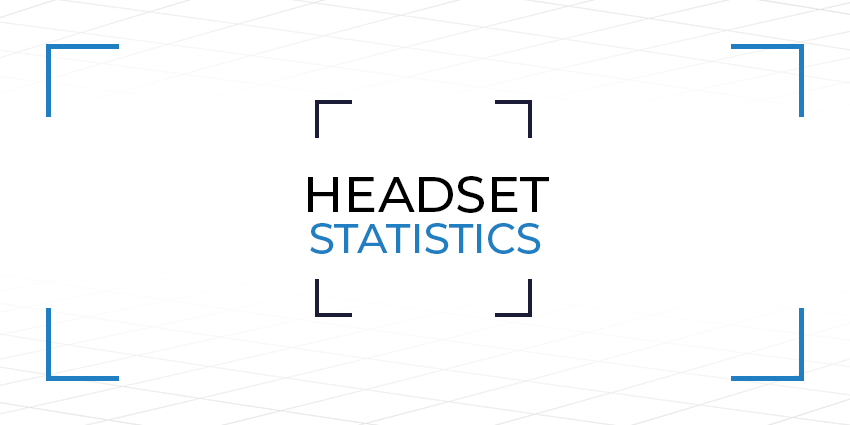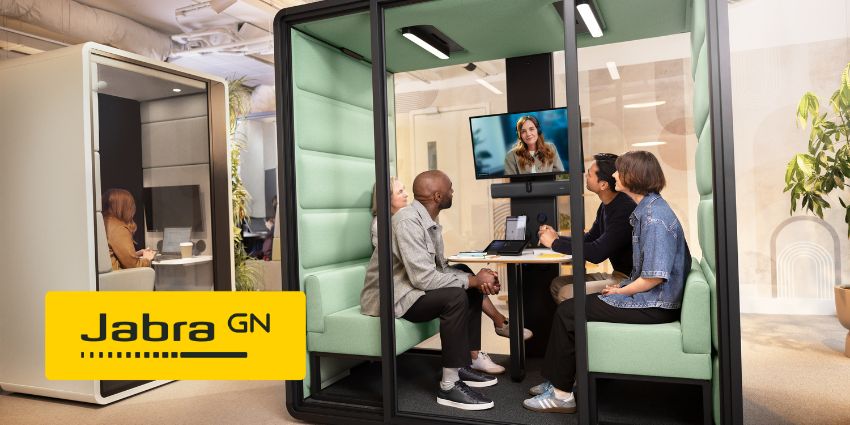Headsets and business headphones have always been a crucial part of the communication landscape.
While phones are great, headsets provide business users with a more convenient, hands-free way to stay connected. In today’s always-on environment, countless professionals rely on headphones for better productivity, efficiency, and focus.
Headsets are growing particularly popular in the professional world now that trends like mobile and remote working are evolving. As work becomes something we do, rather than a place that we go to, people are using headsets to block out the distractions of an ever-changing environment.
The right headphones can eliminate background noise so that teams can concentrate on the task at hand. Many of these solutions also come with microphones that know how to block out everything but the human voice.
Building a Business Case for Headsets
Headsets aren’t a new concept in business communications. These handy tools give customer service reps and in-office employees a way to stay on-task, without disrupting the entire workplace. Headsets allow for more secure conversations about personal details with customers.
What’s more, a good pair of noise-cancelling headphones also block out the external noise that might distract your team members. However, recently, the need for headsets has grown thanks to a rapid change in the way we work.
Over the last few years, companies have begun introducing new working environments that require greater audio privacy. For instance, in an open office where everyone works together in the same space, headsets prevent the environment from becoming too noisy.
In coworking buildings, where multiple businesses share the same premises, headsets assist with compliance issues. What’s more, with 50% of people ready to work remotely by the end of this year, headsets support other non-traditional settings for productivity too.
The following statistics and facts will help you to understand the benefits and selling points of business headsets.
Top 10 Headset Facts You Need to Know
The demand for things like personal meeting room tools and headsets is increasingly rapidly lately. One of the biggest drivers of this trend is the accelerating need for something like remote and flexible work. These trends were already emerging before 2021, but they’re even more significant now.
After the COVID-19 pandemic hit, companies began to see first-hand that flexible working is a must-have. Around 84% of IT managers say that mobility is now crucial for their teams. Here are some of the most important facts you need to know about headsets in the workplace.
- New technology will transform the future of headsets: Today’s companies want endpoints for a more mobile workforce. The rise of new technology, like 5G, will make remote workers and their headsets even more incredible. Remember, 5G can stream voice and data up to 10 times faster than 4G. Source: IT Toolbox
- Headsets are important for mobile apps and softphones: The business phone isn’t dead, but it’s not as popular as it once was. 29% of companies are switching to VoIP softphone clients and apps. Headsets offer easy access to these. Source: Business 2 Community.
- We’re connecting headsets to more tools: Cisco found that employees are now linking their headsets to Mac or PCs (74%), desk phones (55%), and smartphones (45%). A flexible headset is essential in this environment. Source: Cisco Business Headsets
- The marketplace is growing: The market for business headsets is rising at an incredible rate. MarketWatch says that COVID-19 will have a massive impact on the headsets industry. Source: MarketWatch.
- Headsets support the new working environment: Avaya’s study found that 36% of employees now have an open floor plan, while 17% have no fixed office. Concentration would be tough in these environments without a headset. Source: Avaya 2019 state of the desktop report.
- UC headsets are more valuable than ever: In 2018, the business headset market was worth 1,960 million. From 2019 to 2025, this value is set to grow at a rate of around 12% CAGR. Source: Grandview Research.
- Headset connections are evolving: The connections we use to link headphones to other devices is evolving too. 57% of today’s employees use Bluetooth, while 20% use USB-A. Only 11% use DECT, 7% use 3.5mm jacks, and 5% use USB-C. Source: Cisco Business Headsets
- The average employee needs more tech: The average employee uses around 2.3 devices each day for work purposes. Nearly a quarter of all employees are using more than 6 devices every day. Unfortunately, each device requires a nuanced UC platform integration and custom configuration. Source: Unify Square.
- Employees want more personal experiences: When asked what they would change about their communication devices, 29% of respondents said they would make their tools more “personal”. Source: Avaya 2019 state of the desktop report.
- Voice quality matters most: When choosing headsets for business conversations, companies say that 100% incredible voice quality is the most important factor, followed by wearing comfort (99%), noise cancellation (98%), and ease of connectivity (95%). Source: Cisco Business Headsets
Top Headset Statistics for Your Business Case
With so many incredible tools appearing in the cloud and software space, it’s easy to overlook the importance of hardware endpoints like headsets. However, if you’ve ever sat in a busy office or call centre before, you’ll know how valuable these tools are.
The right headset is a critical accessory for any employee that needs help maintaining productivity and focus in a range of professional spaces. As new tools for collaboration continue to gain popularity, headsets will become even more important. For instance, most video conferencing participants will use a headset to avoid any issues with echo in a meeting.
Here are some key stats to help you better understand the value of headsets.
- Simplicity is essential: Avaya’s report found that today’s employees want their devices to be more personalized (28%), have one-touch access (28%), and be designed exclusively for their type of work (26%). A good audio quality experience is crucial too (22%). Source: Avaya 2019 state of the desktop report.
- Manageability is crucial for IT: Just as teams want simpler tools, IT experts want systems that area easy to manage. 98% of IT teams would prefer a single integrated platform where they can manage all headsets, phones, and applications in the same place. Source: Cisco Business Headsets
- Headsets need to make communication easy: According to RingCentral, the best business technology needs to be accessible. Communication inefficiencies are one of the biggest issues that prevent teams from getting things done. Source:
- New innovations are on the horizon: Experts predict that 52.1 million people are using VR in 2020, and another 83.1 million people are using AR. This represents a significant part of the population moving into mixed-reality experiences. Source: eMarketer.
- Lack of functionality is a problem for employees: When Avaya asked team members what they disliked about their communication devices; poor audio quality was the top issue (33%). 31% of users said the devices didn’t do the same things as personal devices. Source: Avaya 2019 state of the desktop report.
- Mixed reality headsets are shipping faster: Sales of AR and VR headsets are increasing. By 2023, Statista says that both technologies will sell over 26 million units. This will lead to a revolution both in the consumer and business landscape. Source: Statista.
- Headsets must be secure: Like all communication tools, headsets need to eb secure. Around 85% of users believe that Bluetooth connections are secure, however that isn’t always the case. Source: Cisco Business Headsets
- Employees still have concerns about using headsets: When asked why they would avoid using a headset, respondents said that they were concerned about various things. The top issue was coworkers bothering them because they didn’t know they were in a call (36%). 33% of people said they were worried the headphones would harm their hearing. Source: Avaya 2019 state of the desktop report.
- ANC is making over-ear headsets more popular: Though over-ear headsets are bulky, customers are drawn to this technology by active noise cancellation and similar tools. Source: Grandview Research.
- Comfort will always be key: Employers need to ensure that business headsets are safe and comfortable. Research shows that long-term noise exposure increases our risk of stroke and heart attacks, as well as issues with low mood. Source: Aircraft noise, air pollution, and mortality from myocardial infarction.







